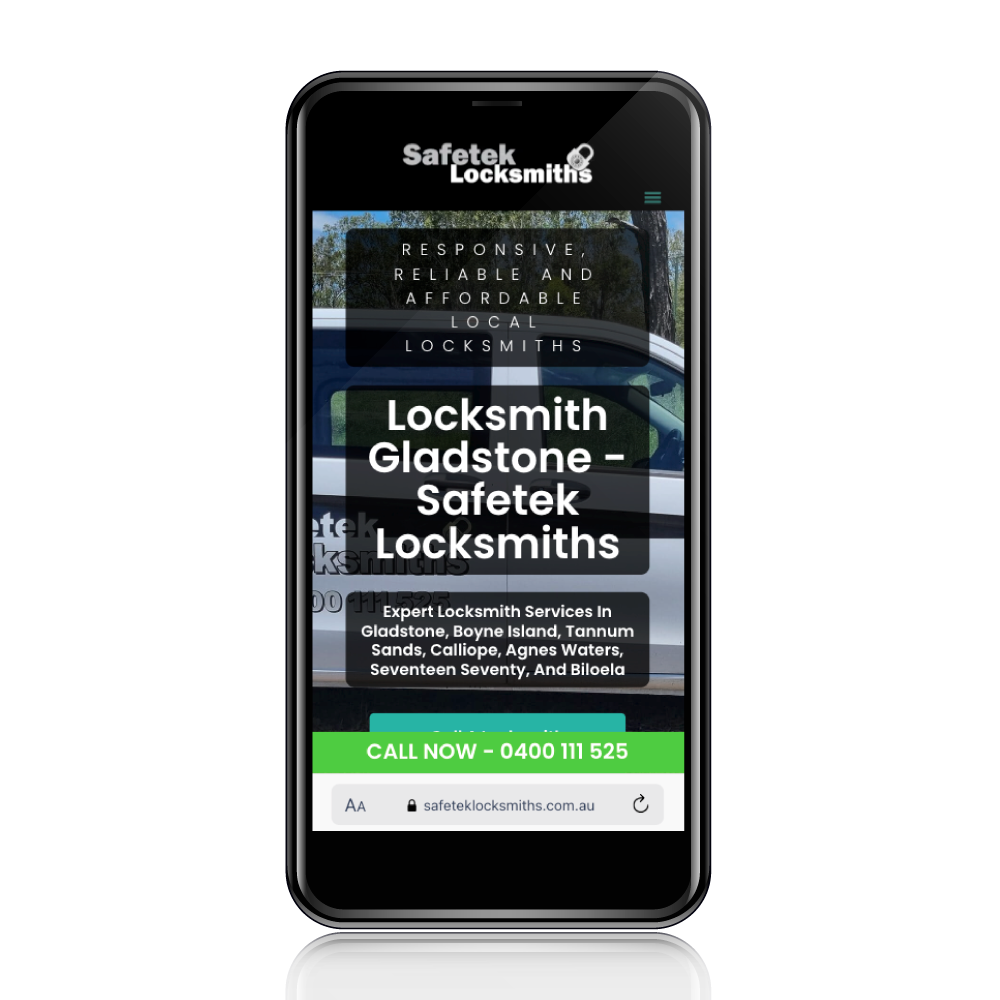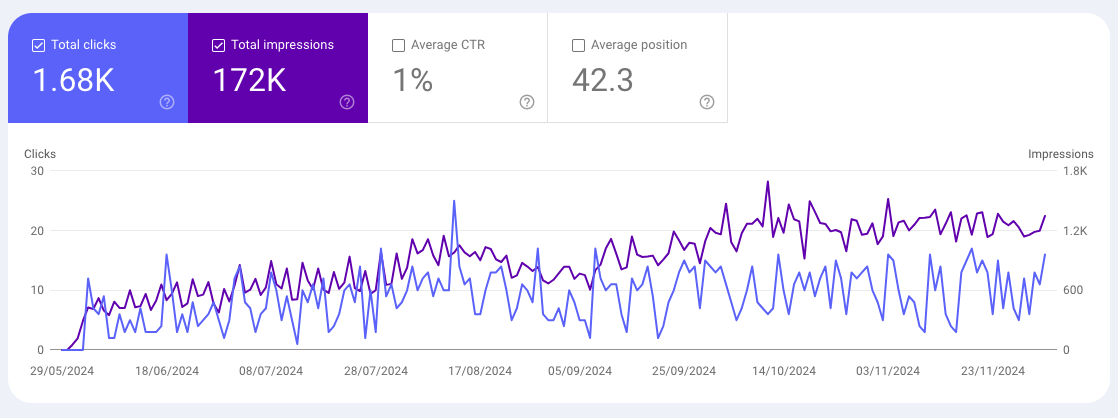
Lead Generating Websites For Electricians
Lead Generating Websites For Electricians, That Get You Predictable Jobs!
• High Ranking
• Lead Generating
• Done for you


WHAT DO YOU WANT TO ACHIEVE? INCREASE BRAND AWARENESS INCREASE THE NUMBER OF LEADS INCREASE THE NUMBER OF SALES INCREASE THE VALUE OF SALES DECREASE ADMINISTRATION TIME DECREASE STRESS
Lead Generating Websites For Electricians
Creating effective websites for electricians is crucial in today’s digital age. A mobile-friendly design is essential, as most clients use their phones to search. With Tradie Up, you can ensure your website is both high-ranking and lead-generating.
Why Mobile-Friendly Website Design is Essential For Electricians
Electricians need mobile-friendly websites for on-the-go clients. A site that adapts to mobile screens boosts engagement. With more users browsing on phones, a responsive design ensures your website is accessible anytime, anywhere, enhancing client interaction.
The Latest UX/UI Website Trends For Electricians
Modern UX/UI trends focus on simplicity and speed. Electricians’ websites benefit from clean layouts and intuitive navigation. Using bold visuals and easy-to-find contact details can make your site more appealing and functional for potential clients.
How to Optimise Your Website Speed and Performance
Website speed is crucial for retaining visitors. Optimise images and minimise plugins to enhance performance. Regular speed tests help identify areas for improvement, ensuring your site runs smoothly and efficiently, keeping clients satisfied and engaged.
Choosing the Best Website Platform For Electricians
Selecting the right platform is vital. WordPress offers flexibility and ease of use for electricians. It supports SEO tools and plugins, helping you create a high-ranking, user-friendly website tailored to your business needs.
Creating A Website That Converts Leads For Electricians
Lead conversion is key for electricians. Clear calls to action and contact forms make it easy for clients to reach out. Highlight testimonials and showcase past projects to build trust and encourage new business inquiries from your website.
Maintaining Your Website to Stay Ahead of Competitors
Regular updates keep your site relevant. Fresh content and updated services maintain interest and improve SEO. Frequent check-ups ensure your website remains competitive, offering clients the latest information and features.
Discover how we can help you today! Learn more by booking a free consultation.

Why Mobile-Friendly Website Design is Essential For Electricians
In today’s digital age, having a mobile-friendly website is no longer a luxury but a necessity, especially for electricians. As more people use smartphones to search for services, ensuring your website is easily accessible and functional on mobile devices can significantly impact your business.
Improved User Experience
When potential customers visit your website from their mobile devices, they expect seamless navigation. A mobile-friendly design ensures that all elements of your site, from images to text, are optimised for smaller screens. This means faster load times, easy-to-read content, and a generally more pleasant user experience. When visitors have a positive experience, they’re more likely to engage with your services and become customers.
Higher Search Engine Rankings
Search engines, like Google, prioritise mobile-friendly websites in their search results. If your website isn’t optimised for mobile devices, it could rank lower, making it harder for potential customers to find you. By ensuring your site is mobile-friendly, you can improve your visibility online, bringing in more traffic and potential leads.
Increased Engagement and Conversions
A mobile-friendly website can lead to higher engagement rates. When users can easily navigate your site, they’re more likely to spend time exploring your services and offerings. This increased engagement can directly translate into higher conversion rates, whether that means booking a consultation, calling your business, or filling out a contact form.
Competitive Advantage
Many electricians may overlook the importance of a mobile-friendly website, giving you a chance to stand out. By investing in a mobile-optimised design, you can differentiate your business from competitors who may not have adapted to the mobile-first world. This edge can be crucial in attracting new customers and retaining existing ones.
Adapting to Consumer Behaviour
Consumer behaviour has shifted dramatically with the rise of mobile technology. People are increasingly using their phones to research services while on the go. By having a mobile-friendly website, you’re adapting to this trend and ensuring that you’re meeting your audience where they are. This adaptability can play a significant role in building trust and credibility with potential clients.
In conclusion, a mobile-friendly website is a critical component for electricians looking to thrive in a competitive market. By focusing on mobile optimisation, you can enhance user experience, improve search engine rankings, increase engagement, gain a competitive advantage, and adapt to changing consumer behaviours. Investing in a mobile-friendly design is not just about keeping up with trends; it’s about future-proofing your business for long-term success.

The Latest UX/UI Website Trends For Electricians
Ever wondered how Websites For Electricians can benefit from the latest UX/UI trends? Boost your online presence and attract more clients with cutting-edge design strategies.
In the digital age, electricians need more than just a great reputation to stand out. A modern, user-friendly website is crucial for attracting and retaining customers. Keeping up with the latest UX/UI trends can make all the difference in effectively communicating your services and expertise to potential clients.
Dark Mode Design
Dark mode is not just a fad; it’s a practical design choice that can enhance user experience. Electricians can benefit from dark mode by reducing eye strain for users browsing at night. It also helps make bright elements like call-to-action buttons stand out. Implementing dark mode can give your website a sleek, modern look while offering visitors a more comfortable browsing experience.
Minimalist Navigation
Simplicity is key in today’s fast-paced world. A minimalist navigation design ensures that visitors can easily find what they’re looking for without getting overwhelmed. For electricians, this means having clear headings like services, contact, and about us prominently displayed. Streamlining your navigation not only improves user experience but also keeps potential customers engaged and focused on your core offerings.
Micro-Interactions
Micro-interactions are subtle animations or design features that guide users and enhance engagement. For an electrician’s site, these could include hover effects on buttons or icons that animate when clicked. These small touches can make the site feel more interactive and professional, encouraging visitors to explore further and ultimately take action, like booking a service.
Personalised User Experience
Personalisation is becoming increasingly important in web design. Adapting content based on user behaviour or preferences can significantly improve engagement. For example, returning visitors could be shown recently viewed services or testimonials related to their interests. By tailoring the user experience, electricians can create a more relevant and satisfying journey for their potential customers.
Mobile-First Design
With more people using mobile devices to browse the web, a mobile-first design approach is essential. Electricians should ensure that their websites are fully responsive, offering seamless navigation and quick load times on smartphones and tablets. A well-optimised mobile experience not only improves user satisfaction but also boosts search engine rankings, making it easier for customers to find your services.
Interactive Content
Interactive content can greatly enhance user engagement on an electrician’s website. This could include calculators for estimating service costs or interactive maps showing service areas. By offering tools that engage and inform, you can increase the time visitors spend on your site and improve the likelihood of converting them into clients.
Staying on top of UX/UI trends is essential for electricians who want to create a lasting impression online. By integrating these elements into your website, you can improve user experience and ultimately drive more business.

How to Optimise Your Website Speed and Performance
Is your electrician website leaving potential clients waiting? Boost your Websites For Electricians with top-notch speed and performance for better customer engagement.
In today’s digital landscape, having a fast and efficient website is crucial for electricians looking to attract and retain customers. A slow-loading website can drive potential clients away, impacting your business’s bottom line. Optimising your website’s speed and performance is essential to provide an excellent user experience and improve search engine rankings.
Audit Your Current Website Performance
Start by assessing your website’s current speed and performance. Use tools like Google PageSpeed Insights or GTmetrix to identify areas for improvement. These tools provide insights into load times, file sizes, and other aspects that may be slowing down your site. Understanding your site’s performance will help you prioritise the necessary changes.
Optimise Images and Multimedia
Images and multimedia content can significantly impact your website’s loading speed. Ensure that all images are compressed without compromising quality. Use formats like JPEG or WebP for faster loading. Consider lazy loading techniques, which load images only when they come into the viewer’s viewport, enhancing speed and performance.
Minimise HTTP Requests
Every element on your website, from images to scripts, requires an HTTP request. Minimising these requests can help boost your site’s speed. Combine CSS files, reduce the number of plugins, and streamline the design to cut down on the number of requests. A leaner website will load faster and offer a better user experience.
Leverage Browser Caching
Browser caching stores elements of your website in a user’s browser, so they don’t have to be reloaded every time the user visits. Set up browser caching to reduce load times for returning visitors. This is particularly useful for electricians, as clients may revisit your site for additional services or contact information.
Use a Content Delivery Network (CDN)
A Content Delivery Network (CDN) can significantly improve your website’s speed by distributing your content across multiple servers worldwide. This ensures that users access your site from the server closest to them, reducing latency and load times. CDNs can be especially beneficial for electricians serving clients across different regions.
Optimise Your Web Hosting
Your web hosting provider plays a vital role in your site’s performance. Ensure you choose a reliable host that offers fast server speeds and excellent customer support. Consider upgrading to a VPS or dedicated server if your current hosting is unable to handle your site’s traffic efficiently.
Implement Gzip Compression
Gzip compression reduces the size of your website’s files, making them load faster in browsers. Enabling Gzip on your server can drastically improve page load times. This is a simple yet effective way to enhance your website’s performance without significant changes to your site’s infrastructure.
By taking these steps to optimise your website’s speed and performance, electricians can ensure a seamless user experience, helping to attract and retain more customers. A fast website not only improves client satisfaction but also boosts your search engine visibility, driving more organic traffic to your business.
Looking for Lead Generating Websites? We offer Custom WordPress Websites that get more traffic and convert more leads
Lance Tanuvasa - Digital Performance Specialist

Choosing the Best Website Platform For Electricians
Ever wondered why choosing the right platform for ‘Websites For Electricians’ is crucial? A top-notch online presence can electrify your business visibility and boost customer engagement.
Choosing the right website platform is crucial for electricians looking to establish a strong online presence. A well-chosen platform can enhance visibility, improve customer engagement, and ultimately boost business. With numerous options available, how do you select the best one? Here’s a guide to help you make an informed decision.
Ease of Use
For electricians, time is money. You need a platform that’s user-friendly and doesn’t require extensive web development skills. Platforms like WordPress and Wix are popular for their intuitive interfaces and drag-and-drop features. This makes it easy to update content or tweak designs without needing a tech expert.
SEO Capabilities
Search engine optimisation is vital for visibility. Your chosen platform should offer strong SEO tools to help your site rank well in search results. Look for platforms that allow easy meta tag updates, support for SEO plugins, and mobile responsiveness to cater to users on different devices.
Customisation Options
Your website should reflect your brand and services uniquely. Platforms with flexible customisation options allow you to tailor the design and functionality to suit your business needs. WordPress, for example, offers thousands of themes and plugins, providing endless possibilities for personalisation.
Integration with Business Tools
An effective website integrates seamlessly with other business tools like scheduling apps, CRM systems, and social media. This integration streamlines operations and enhances customer experience. Platforms that offer APIs or support third-party integrations can significantly benefit electricians.
Cost Considerations
Budget is always a concern. While some platforms are free, they may come with limitations or require premium features at a cost. Consider the long-term value of investing in a platform that meets your needs without hidden expenses. Weigh the potential return on investment against the upfront costs.
Support and Resources
Reliable customer support is essential, especially if you hit a technical snag. Platforms with robust support, tutorials, and active communities can be incredibly helpful. Ensure that technical assistance is available when you need it, whether through live chat, forums, or comprehensive guides.
Taking the time to evaluate these factors will help you choose a website platform that supports your business goals and enhances your online presence effectively. The right platform can be a game-changer for electricians aiming to grow in the digital landscape.

Creating A Website That Converts Leads For Electricians
Is your electrical business ready to spark interest online with Websites For Electricians? Discover how an optimised site can boost your customer base and streamline bookings.
Creating a website that effectively converts leads is crucial for electricians looking to expand their business. A well-designed site not only attracts potential customers but also guides them to take action. Understanding the elements that contribute to a high-converting website can set you apart in the competitive electrical services market.
Craft a Compelling Homepage
Your homepage is the first impression potential clients get, so it must be engaging and informative. Use eye-catching visuals and concise messaging to highlight your services. Clearly display your contact information and include a strong call-to-action, encouraging visitors to reach out or request a quote. A simple, intuitive layout can keep visitors on your site longer, increasing the chances of conversion.
Showcase Your Expertise
Establish trust by showcasing your qualifications, certifications, and years of experience. Including client testimonials and case studies can provide social proof, reassuring potential clients of your reliability and quality of work. A dedicated section on your website for reviews and success stories can significantly enhance credibility.
Optimise for Mobile Devices
With a significant number of users browsing on mobile devices, ensure your website is responsive and easy to navigate on smaller screens. Fast loading times and a mobile-friendly design can prevent potential clients from leaving your site in frustration. Test your website across various devices to ensure it delivers a seamless experience.
Utilise SEO Strategies
Implementing effective SEO strategies can help your website rank higher in search engine results. Use relevant keywords such as “electrician services” or “licensed electrician” throughout your content. Local SEO is particularly important for electricians, so include location-based keywords and set up a Google My Business profile to boost local visibility.
Provide Valuable Content
Offering informative content like blogs, FAQs, and how-to guides can engage visitors and position you as an industry expert. This content can address common electrical issues or provide tips, which not only aids in SEO but also builds trust with potential clients. Regularly updating your content ensures your website remains relevant and valuable.
Streamline the Contact Process
Make it easy for visitors to contact you by simplifying the process. Include contact forms on every page and offer multiple ways to get in touch, such as phone, email, and live chat. Quick response times and a user-friendly contact process can significantly improve lead conversion rates.
By focusing on these key elements, electricians can create a website that not only attracts visitors but also effectively converts them into loyal clients. A strategic approach to web design and content can lead to sustained business growth.

Maintaining Your Website to Stay Ahead of Competitors
Ever wondered how Websites For Electricians can boost your local visibility and client trust? Staying current online keeps you ahead in the competitive electrical market.
Maintaining your website is crucial for electricians who want to stay ahead of competitors. A well-maintained site not only attracts potential clients but also helps establish trust and authority in your field. As the digital landscape evolves, it’s vital to keep your website up-to-date and running smoothly. This ensures you provide a seamless user experience while enhancing your online visibility.
Regularly Update Content
Fresh content is key to keeping your website relevant and engaging. Regularly updating your blog with industry news, tips, or case studies can boost your SEO and attract more visitors. Consider adding FAQs or how-to guides that address common customer queries. This not only showcases your expertise but also helps in building a connection with your audience.
Optimise for Mobile Devices
With more people using smartphones to browse the web, having a mobile-friendly website is essential. Ensure your site is responsive and loads quickly on all devices. Mobile optimisation not only improves user experience but also impacts your search engine rankings. Regularly test your site’s mobile performance to avoid any technical hiccups that could turn potential clients away.
Improve Website Speed
Website speed is a critical factor in user experience and SEO performance. Slow-loading pages can frustrate visitors, leading them to leave your site. Regularly check your website’s speed and make necessary adjustments, such as compressing images or leveraging browser caching. A fast website can significantly improve your chances of retaining visitors and converting them into customers.
Conduct Regular SEO Audits
SEO is not a one-time task; it requires ongoing attention. Regular SEO audits help you identify areas that need improvement and ensure your website aligns with the latest search engine guidelines. Focus on optimising keywords, meta tags, and alt texts for images. Staying updated with SEO trends and adjusting your strategies accordingly can help keep your site competitive.
Ensure Security and Backups
Website security is paramount, especially for maintaining customer trust. Regularly update your security protocols and ensure your site has an SSL certificate. Backing up your website frequently is also crucial, as it protects your data from unexpected issues. A secure website not only prevents data breaches but also enhances your reputation as a reliable professional.
Engage Through Social Media Integration
Social media is a powerful tool for connecting with potential clients and driving traffic to your website. Integrate social media buttons on your site to encourage sharing and engagement. Regularly update your social media profiles with content from your site to increase visibility. This cross-promotion can boost your brand presence and help you reach a wider audience.
The Benefits of Lead Generating Websites For Tradies
A Lead Generating Website Is A Game Changer For Tradies Busineness.
Mobile-Friendly Design
Websites That are easy to use on any device, increase the customer of enquiries.
Fast Loading Pages
Fast load times creates a better user experience and higher search engine rankings.
Optimised Navigation
Help visitors find information quickly and easily with a Google preferred structure.
AI Chat Bots and Booking Forms
Capture leads effortlessly with user-friendly AI Chat Bots and contact systems.
Showcase Trade Services
Highlight your expertise with a well-organised services page tailored for trades.
SEO-Ready Sites
Build websites optimised to rank higher and drive more traffic to your business out of the box.
Chat With A Tradie Up Websites Expert
We are ready to help you with Branding, Websites, SEO, Google Ads, Social Media and Business Automation services, specifically created for tradies.
We increase your brand awareness, get you more enquiries and new customers so that you can scale your business and save you time and reduce stress.
Call Tim on 0407 930 868 at a time that suits you, to see if we are a good fit for your tradie business.
MORE LEADS. LESS HASSLE.
- Google First Page Guarantee
- Only one trade per location
- No lock-in contracts
- Automated marketing in only 14 Days
- Australian owned and operated
Sounds too good to be true?
Do ya reckon it’s worth a quick chat to find out? What have ya got to lose?
Enquire about Lead Generating Websites for Tradies
Please leave your details in the form and we will call you back the same day.
So that we can process your enquire efficiently please leave as many details as possible and upload any relevant images. (.jpg and .png format)
LET'S HAVE A CHAT ABOUT... INCREASE BRAND AWARENESS INCREASE THE NUMBER OF LEADS INCREASE THE NUMBER OF SALES INCREASE THE VALUE OF SALES DECREASE ADMINISTRATION TIME DECREASE STRESS
Calling All Electricians... When you know, you know!

Discover How To:
- Identify your key marketing numbers
- Using marketing tools to work smarter
- How to choose the right marketing
Frequently Asked Websites Questions By Tradies
It may also be an urgent or time-sensitive situation.
Got questions? Reach out to Lance on 0449 562 421 and he’ll be happy to help you.
Every small business needs a professional website. It’s like the digital face of your brand, helping you reach more customers and build trust online. Let’s explore why having a well-crafted website is crucial for small businesses, especially in today’s digital age.
Builds Credibility
Having a professional website boosts your business’s credibility. Customers are more likely to trust a business with an online presence. A polished website with the right information reassures visitors that you’re legitimate and reliable. Fun fact: 81% of consumers research online before making a purchase decision.
Increases Visibility
A professional website improves your visibility, making it easier for potential customers to find you. With effective SEO strategies, your site can appear in search engine results, driving organic traffic. The more visible you are, the higher your chances of attracting new clients.
Showcases Products or Services
Your website is the perfect platform to showcase what you offer. Detailed descriptions, quality images, and customer reviews can highlight your products or services effectively. This not only informs potential customers but also persuades them to choose your business over competitors.
Enhances Customer Engagement
Engaging with customers is crucial for small businesses. A website allows you to connect through newsletters, blogs, and contact forms. By offering valuable content, you keep your audience interested and encourage repeat visits, fostering long-term relationships.
Cost-Effective Marketing
Compared to traditional advertising, a website is a cost-effective marketing tool. It offers ongoing promotion and allows you to reach a larger audience without breaking the bank. Plus, you can easily update your site with new offers or promotions to keep it fresh.
Learn more by booking a free consultation.
Wondering how to optimise your website for mobile users? You’re not alone. With more folks browsing on their phones, making your site mobile-friendly is crucial. Let’s dive into some practical tips to enhance your mobile experience and keep those visitors coming back.
Responsive Design
Responsive design automatically adjusts your site’s layout to fit any screen size. It keeps your content looking sharp, whether on a smartphone or tablet. A responsive site not only improves user experience but also boosts your search engine rankings, giving you an edge over competitors.
Fast Loading Speed
Mobile users are often in a hurry, so your site needs to load quickly. Optimise images and use browser caching to reduce load times. Did you know that 53% of mobile visitors leave a page if it takes longer than three seconds to load? Keep it speedy!
Easy Navigation
Ensure your site’s navigation is straightforward. Large, tappable buttons and a clear menu make it easier for users to find what they need. Avoid clutter and keep it simple, so visitors aren’t overwhelmed when browsing on smaller screens.
Readable Content
Font size matters on mobile. Make sure text is large enough to read without zooming, and use contrasting colours for better readability. Break up content with headings and bullet points, making it digestible for users skimming on the go.
Mobile-Friendly Forms
Forms should be easy to fill out on a mobile device. Use fewer fields and enable auto-fill to save users time. A simple, efficient form can increase conversions by reducing friction for mobile users.
Curious about more ways to enhance your mobile site? Learn more by booking a free consultation.
When talking about what makes a website user-friendly, it’s all about simplicity and ease of use. People love a smooth experience online, where they can find what they’re looking for quickly. Let’s dive into some of the key features that make a site truly welcoming.
Intuitive Navigation
Clear and logical navigation helps users find information without getting frustrated. Think of well-labelled menus and a straightforward layout. Did you know that 94% of people say easy navigation is the most useful website feature? Keep it simple to keep visitors happy.
Mobile Responsiveness
More people use their phones to browse, so mobile-friendly design is crucial. A responsive site adjusts seamlessly to any screen size, ensuring everyone gets the same great experience. This boosts your SEO too, as search engines love a mobile-optimised site.
Fast Loading Speed
Speed matters. A site that loads quickly keeps users engaged and reduces bounce rates. Aim for pages that load in under three seconds. Fun fact: Google considers page speed in its rankings, so faster sites often perform better in search results.
Accessible Design
Accessibility means everyone, including those with disabilities, can use your site. This might involve using alt text for images and ensuring your content is readable. Not only is it a good practice, but it also broadens your audience reach.
Clear Call-to-Actions
Guide your visitors on what to do next with clear call-to-actions. Whether it’s signing up for a newsletter or booking a service, make these buttons obvious and enticing. A well-placed CTA can significantly increase your conversions.
Learn more by booking a free consultation.
A well-designed website can be a powerful tool for generating more leads. It combines aesthetics with functionality, offering an engaging user experience. Let’s explore how design elements can turn your site into a lead-generation machine.
Optimised User Experience
A seamless user experience is crucial. Ensure fast loading times and easy navigation. When visitors can effortlessly find what they need, they’re more likely to engage. Did you know that nearly 50% of users expect a site to load in two seconds or less?
Clear Calls-to-Action
Strategically placed calls-to-action (CTAs) guide visitors towards conversion. Use clear, action-oriented language like “Get Started” or “Contact Us”. Make sure CTAs stand out by using contrasting colours to grab attention.
Mobile Responsiveness
With more people browsing on mobiles, a responsive design is a must. A site that adapts to different screen sizes ensures a consistent experience, keeping users engaged. Mobile-friendly designs can boost lead generation by offering a seamless journey from any device.
Engaging Content
Content that resonates with your audience builds trust and authority. Keep it relevant, informative, and easy to digest. Incorporate keywords naturally to improve search visibility. Regularly updated content, like blogs or FAQs, can attract and retain potential leads.
Visual Appeal
First impressions matter. Use high-quality images and a clean layout to create a visually appealing site. A well-designed visual hierarchy guides users’ eyes to important elements, making them more likely to convert.
Learn more by booking a free consultation.
Keeping your website safe from cyber threats is crucial. Visitors trust you with their data, and breaches can damage your reputation. By taking strong security measures, you ensure a safe experience for users and protect your business’s integrity.
Update Software Regularly
Always keep your website’s software up to date. Whether it’s your CMS, plugins, or themes, outdated software can have vulnerabilities that hackers exploit. Regular updates patch these security holes, keeping potential threats at bay.
Use Secure Passwords
Secure passwords are essential. Encourage using complex passwords and change them regularly. Consider multi-factor authentication for an added layer of security. It’s an effective way to prevent unauthorized access to your website.
Install an SSL Certificate
An SSL certificate encrypts data transferred between your site and users. It protects sensitive information like credit card details. Plus, search engines favour secure sites, which boosts your SEO ranking. It’s a win-win for security and visibility.
Regular Backups
Regularly backing up your website is a lifesaver in case of an attack. Ensure your backups are stored securely and can be easily restored. This way, you can quickly recover your site without losing valuable data.
Stay vigilant and invest in your website’s security to safeguard against ever-evolving cyber threats. Learn more by booking a free consultation.
Responsive web design is key to enhancing user experience on any device. It’s about making your site look great and work smoothly, whether someone’s on a phone, tablet, or desktop. This can boost your online presence significantly.
Improved User Experience
When your site adjusts seamlessly to different screen sizes, users find it easier to navigate. A pleasant browsing experience keeps visitors on your site longer, reducing bounce rates and potentially increasing conversions. Remember, happy users often lead to loyal customers.
Better SEO Performance
Google favours mobile-friendly websites, so having a responsive design can improve your site’s search engine rankings. This can lead to more organic traffic. Plus, managing a single responsive site is easier than handling separate desktop and mobile versions.
Cost-Effectiveness
Investing in a responsive design means you only need to maintain one website. This approach saves you time and money in the long run, as updates and changes apply universally across all devices. It’s a smart investment for any business looking to streamline its digital presence.
Increased Mobile Traffic
With more people browsing on mobile devices than ever before, having a responsive website can attract more visitors. A site that looks and functions well on mobile can capture this growing audience, helping your business reach more potential customers.
Faster Page Load Times
Responsive websites often load faster on all devices, which is crucial for user satisfaction. Quick loading times improve user experience and can positively impact your SEO, as search engines reward sites that deliver content swiftly and efficiently.
Learn more by booking a free consultation.
Looking to boost your website’s loading speed? It’s a smart move, as faster sites can improve user experience and search rankings. Here are some practical tips to enhance your page speed, making your site more efficient and user-friendly.
Optimise Images
Images can slow down your site if they’re not properly optimised. Compress them without losing quality using tools like TinyPNG. Choose the right format; WebP is great for web use. This simple step can significantly reduce loading times.
Minimise CSS and JavaScript
Minifying your CSS and JavaScript files can streamline your website’s code. Tools like UglifyJS and CSSNano can help remove unnecessary characters. This makes your code leaner and faster to load, boosting your site’s overall performance.
Enable Browser Caching
Browser caching stores some elements of your site on a visitor’s device, so they don’t have to reload everything on each visit. Configuring this can cut down on load times dramatically, especially for returning users.
Use a Content Delivery Network (CDN)
A CDN distributes your website’s content across multiple servers worldwide. This means users access the server closest to them, reducing load times. Services like Cloudflare or AWS CloudFront can enhance your site’s speed and reliability.
Limit Redirects
Each redirect creates additional HTTP requests, slowing down your site. Audit your website to remove unnecessary redirects and ensure links are updated. This helps keep your site snappy and efficient, improving user satisfaction.
Improving your site’s loading speed can lead to happier users and better rankings. Learn more by booking a free consultation.
Choosing the right CMS for your small business website is crucial for your online success. With so many options, finding the best fit can feel overwhelming. Let’s dive into some top choices that cater to small businesses, making your decision easier.
WordPress
WordPress is a popular CMS for small businesses because it’s user-friendly and highly customisable. With thousands of plugins, it can handle everything from e-commerce to blogging. Fun fact: WordPress powers over 40% of websites globally, proving its versatility and trustworthiness.
Wix
Wix offers a drag-and-drop interface, making it perfect for those without technical skills. It provides various templates tailored to different industries. While it’s easy to use, its SEO capabilities are strong, helping your small business website stay visible in search results.
Squarespace
Squarespace shines with its stunning design templates, ideal for businesses focusing on aesthetics. It’s an all-in-one platform, meaning hosting is included. While slightly less flexible than WordPress, it offers excellent support and is great for small businesses prioritising design and simplicity.
Shopify
Shopify is the go-to CMS for e-commerce businesses. It’s designed to handle online sales efficiently, offering integration with various payment gateways. If your small business focuses on selling products online, Shopify’s robust e-commerce features can be a game-changer.
Learn more by booking a free consultation.
Keeping your website content fresh and relevant is key to engaging users and staying ahead in search rankings. But how often should you update your content? Let’s explore some insights on maintaining a dynamic online presence.
Regular Updates for Better Engagement
Updating your website content regularly can boost user engagement and improve SEO. Aim for at least monthly updates to ensure information is current. Fresh content keeps visitors returning and signals search engines that your site is active and relevant.
Focus in Quality Over Quantity
It’s not just about frequency; quality matters too. High-quality content that provides value to your audience will naturally attract more traffic. Whether it’s a blog post or a product page, ensure your updates are informative and well-written.
Leverage Seasonal Trends
Consider updating your site around seasonal trends or industry events. This not only keeps your content relevant but also caters to what users are searching for at specific times of the year. It’s a smart way to attract new visitors.
Monitor and Adapt
Use analytics to track which pages perform best and which need improvement. Regularly reviewing this data helps you understand what your audience wants, allowing you to adapt your content strategy accordingly. Staying informed is crucial for maintaining an effective website.
Learn more by booking a free consultation.
Website analytics are like a roadmap to understanding how your site is performing. By diving into this data, you can spot opportunities to enhance user experience and boost your site’s success. Whether it’s increasing traffic or improving engagement, analytics offer valuable insights.
Identify User Behaviour
Analytics help you see what pages users visit most and how long they stay. This data shows which content resonates and where improvements might be needed. For instance, if a blog post gets high traffic but low engagement, consider tweaking the content or layout.
Optimise Conversion Rates
Understanding conversion paths is crucial. Analytics reveal where users drop off in the buying process. You can use this information to refine your sales funnel, making it smoother and more intuitive. This, in turn, can lead to increased sales and customer satisfaction.
Track SEO Performance
Website analytics also measure your SEO efforts. By monitoring traffic sources, you can see which keywords bring users to your site. This insight helps you adjust your SEO strategy, focusing on high-performing keywords to improve search engine rankings and attract more visitors.
Monitor Mobile Performance
With mobile usage on the rise, ensuring your site performs well on smartphones is vital. Analytics show how mobile users interact with your site, highlighting areas for mobile optimisation. Ensuring a seamless mobile experience can significantly enhance user satisfaction and retention.
Enhance User Experience
User experience is key to keeping visitors engaged. Analytics provide feedback on load times and navigation issues. By addressing these, you enhance user satisfaction, potentially increasing return visits and reducing bounce rates. A well-optimised site creates a positive impression.
Learn more by booking a free consultation.
Need Some Professional Digital Marketing Advice For Your Tradie Business?
We understand you are great at your trade and maybe digital marketing isn’t your thing, that’s okay. Let’s have a chat and see what would suit you best.



